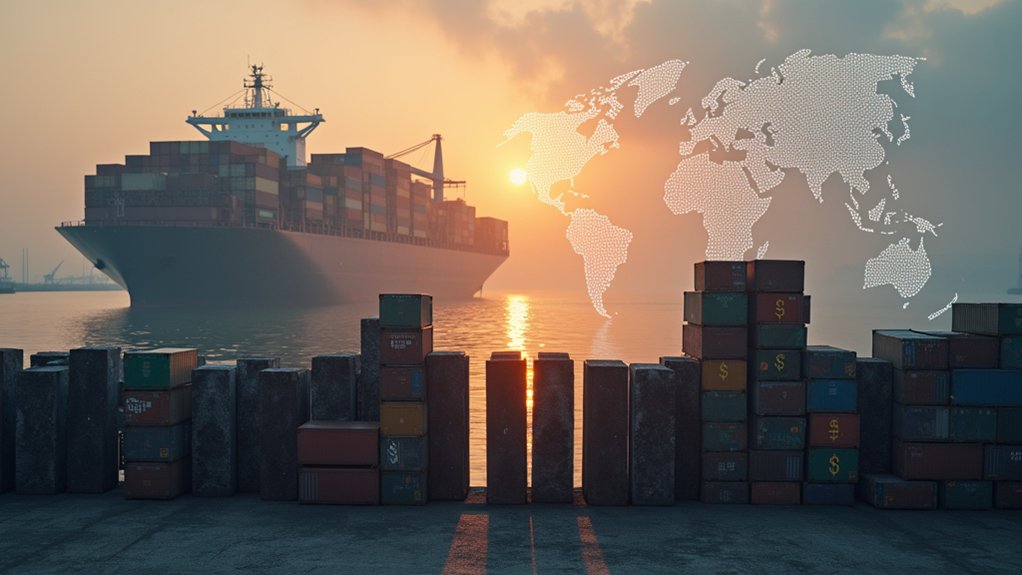Why do nations erect invisible walls around their economies while simultaneously seeking global connections? This paradox sits at the heart of international trade policy, where tariffs—those taxes on imported goods—continue to shape the flow of products across borders. Like tollbooths on economic highways, tariffs silently collect their dues from domestic consumers and businesses, not from foreign exporters as many might assume.
When a container ship laden with electronics docks at port, customs officials calculate the tariff—perhaps 25% of the cargo’s value or $10 per unit.
Behind every imported smartphone lies an invisible toll, silently added before it ever reaches your hand.
The importer pays, then passes this cost down the supply chain until it reaches store shelves where consumers feel the pinch without seeing the cause.
Meanwhile, local manufacturers breathe easier, sheltered behind this financial barrier that makes their products comparatively affordable.
Governments deploy tariffs for various reasons.
Developing nations rely on them for precious revenue. Others use them as shields for struggling industries.
In times of tension, tariffs transform into economic weapons, aimed at foreign competitors who allegedly play unfairly. The metal clangs as barriers rise; trade warriors prepare for battle.
The consequences ripple outward. Protected industries may flourish temporarily, but often at the expense of innovation.
Consumers reach deeper into their wallets. Manufacturing costs climb when essential imported components become pricier.
The global economic engine sputters when too many countries retreat behind tariff walls.
When major economies like the United States impose tariffs on China or the European Union, the targeted countries typically retaliate.
This tit-for-tat escalation creates trade wars that nobody truly wins. Global supply chains fragment under the strain; uncertainty clouds business decisions.
Despite these drawbacks, tariffs persist. The World Trade Organization attempts to referee, establishing maximum rates and dispute resolution mechanisms.
Yet nations continue finding creative ways to protect their interests, demonstrating that in the delicate dance of global commerce, the tension between protectionism and free trade remains unresolved. Organizations like Customs and Border Protection in the U.S. and HM Revenue & Customs in the U.K. serve as the customs authority responsible for collecting these tariffs.
These duties exist in various forms including specific tariffs based on unit measurements rather than value, giving governments flexibility in how they structure import restrictions.









